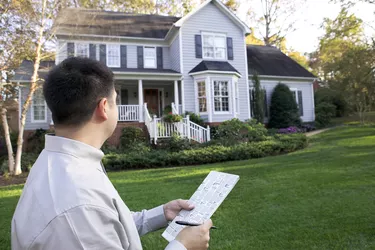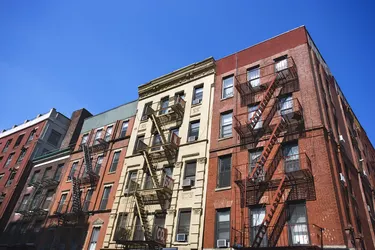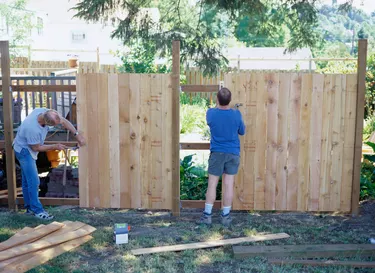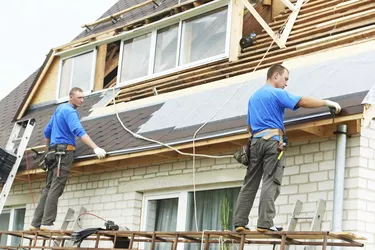
Depreciation is a business tax deduction regulated by the Internal Revenue Service (IRS). It is based on the idea that every asset has a useful life -- a period of time over which it remains useful and productive. At the end of its useful life, it is expected to be obsolescent. To determine yearly depreciation, divide the cost of the asset by its useful life. You then deduct the depreciation from income every year of the useful life. The IRS places assets and capital improvements into classes of useful lives.
Rental Buildings
Video of the Day

A residential rental building has a useful life of 27.5 years, according to the IRS. A nonresidential building has a useful life of 39 years. Land is not depreciable because it does not wear out. When filing your taxes the first year after a rental purchase, you must distribute the property's cost between the building and the land in order to determine depreciation. This will usually be a somewhat subjective exercise because the cost is not broken down in that manner during the sale.
Video of the Day
Five-Year Life

Appliances, carpet, and furniture, when used in connection with rental property, all have a five-year useful life. Sometimes these assets will still be in service after their useful lives, as classified by the IRS, have ended. In this case the assets continue to serve you but you cannot claim any depreciation on them.
15-Year Life

The IRS assigns a useful life of 15 years to shrubs and fences. A major landscaping of the property might include these features.
Affixed structures

Roofs, furnaces, siding, windows and other improvements affixed to buildings are given useful lives the same as the buildings to which they are affixed. Therefore, a furnace in a residential rental building has a useful life of 27.5 years. A roof on a commercial building has a useful life of 39 years.
Expenses

For an improvement to a building to have any useful life it must be a capital improvement. It must add to the value of the building as opposed to merely maintaining the building, and it must, itself, have a useful life of at least one year. Painting is considered a maintenance expense. It is fully deductible in the year it is paid for. Therefore it, and all other regular maintenance work, is not classified as having any useful life.